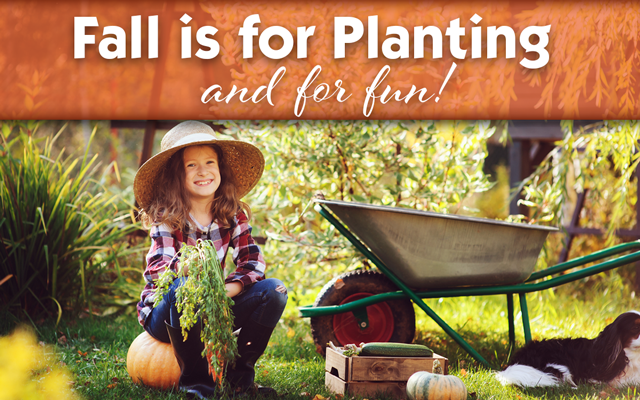 Fall is for Planting– You see this advertising slogan often at garden centers in autumn. So what does this have to do with homeschooling? More than you might think.Planting in the fall helps trees and shrubs become established during the cooler months, before enduring the warm, often dry conditions of summer. The benefits to giving plants a strong start are many. The plant has an opportunity to establish and strengthen while sending out new roots. The plant will be more resistant to pests, disease, drought, and other adverse conditions. A strong plant will be healthier, live longer, and will provide benefits to the environment around it.Parents who teach their children at home are raising them using similar principles; they are helping them establish healthy roots. These children have the advantage of a more relaxed and customized learning climate. They have time to play, imagine, to learn, and to discover through various means. These children are less likely to be influenced by negative peer pressure. Homeschool parents have the opportunity to impart their values and help children gain confidence. In the long run, this will make them better citizens. Like young plants in a greenhouse, children can be strengthened and established before heading out on their own.Think of your homeschool endeavors, even on the most challenging of days, as the wonderful advantage your young plants need. You are giving your children an edge. Plants well established and cared for always produce good things!Fall is for Fun– You are less likely to see this slogan at a garden center, but fall provides ample opportunities to enjoy and learn about nature. Cooler temperatures provide the perfect backdrop for nature hikes, a trip to the beach, and excursions to the interesting things to see and do in your state. Here are a few ideas that can be adapted for all ages.
Fall is for Planting– You see this advertising slogan often at garden centers in autumn. So what does this have to do with homeschooling? More than you might think.Planting in the fall helps trees and shrubs become established during the cooler months, before enduring the warm, often dry conditions of summer. The benefits to giving plants a strong start are many. The plant has an opportunity to establish and strengthen while sending out new roots. The plant will be more resistant to pests, disease, drought, and other adverse conditions. A strong plant will be healthier, live longer, and will provide benefits to the environment around it.Parents who teach their children at home are raising them using similar principles; they are helping them establish healthy roots. These children have the advantage of a more relaxed and customized learning climate. They have time to play, imagine, to learn, and to discover through various means. These children are less likely to be influenced by negative peer pressure. Homeschool parents have the opportunity to impart their values and help children gain confidence. In the long run, this will make them better citizens. Like young plants in a greenhouse, children can be strengthened and established before heading out on their own.Think of your homeschool endeavors, even on the most challenging of days, as the wonderful advantage your young plants need. You are giving your children an edge. Plants well established and cared for always produce good things!Fall is for Fun– You are less likely to see this slogan at a garden center, but fall provides ample opportunities to enjoy and learn about nature. Cooler temperatures provide the perfect backdrop for nature hikes, a trip to the beach, and excursions to the interesting things to see and do in your state. Here are a few ideas that can be adapted for all ages.
Play “leaf detective” by identifying leaves collected in your yard or on a nature walk. Little ones can enjoy the colors and shapes, the older ones can identify evergreen and deciduous, and examine the bark, leaf structure, etc. The library or bookstore can supply you with a guide to trees if you don’t already have one.
Make a nature collage or shadowbox with colorful leaves, pinecones, acorns and other fall treasures. Use Styrofoam plates or meat trays and glue to create mosaics with pebbles, small leaves and twigs, seeds, and so on. Or try some leaf rubbings by placing paper over leaves (vein side up) and rubbing crayons or colored pencils over the paper.
A nature sketchbook or notebook is a good place to draw or record interesting things seen on a hike or around the yard. Look for changing leaves and animal signs such as footprints, nests, and migrating birds. Keep a fall journal noting the daily temperature, cloud patterns and general conditions, or watch for a harvest moon.
For fall fun in the kitchen, make some applesauce, apple crisp, or apple butter. “Dissect” a pumpkin and toast the seeds, or make a pie. Hollow out a large gourd and make a birdhouse or feeder.
Put a new twist on the old “What I did last summer” writing assignment. Have your children write about what they will do in the summer ten years from now. Or have them write a sensory poem about fall–encourage them to think about crunchy leaves, cool, crisp breezes, smoky bonfires, or bouncy hayrides.
Fall is a great time to do some lessons on the porch or on a blanket on the lawn. Take a snack and work on math, read a story, or listen to the classics on tape and soak up the sunshine. Enjoy the wonders of creation while your plants are still young!






























